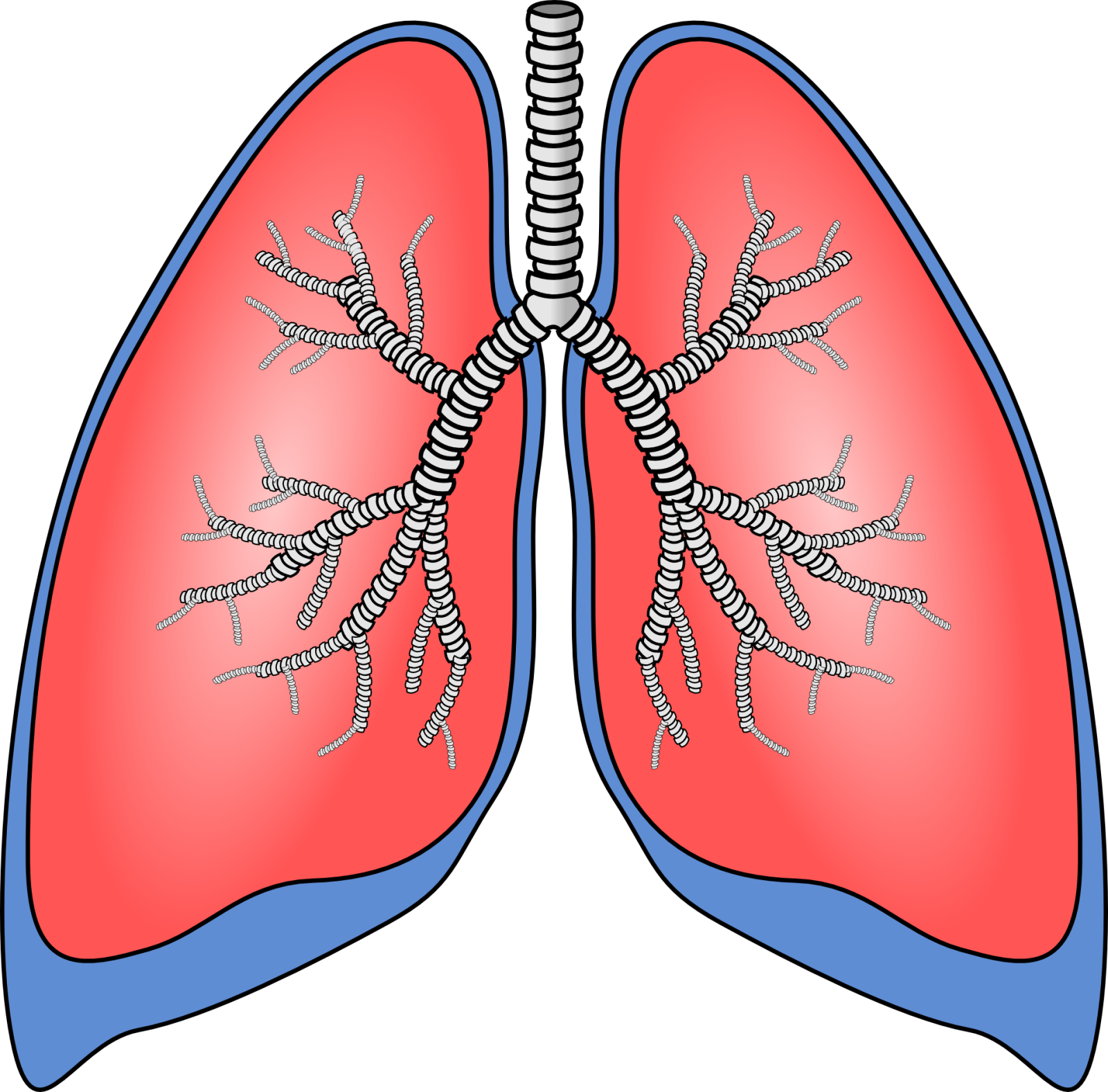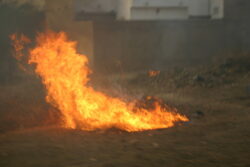Bronchial Cancer Claims
Bronchial cancer claims arise from the unfortunate reality that certain occupational and environmental exposures can lead to the development of this malignancy. Workers in industries with a history of exposure to carcinogens such as asbestos or coke oven emissions may find themselves facing a bronchial cancer diagnosis, often years after their initial exposure. These individuals, or their families in the case of a deceased victim, may be entitled to compensation through legal channels. The process of claiming such compensation is intricate, requiring thorough documentation and often the guidance of specialized legal expertise. This introduction will provide an overview of the critical aspects of bronchial cancer claims, including eligibility, the claims process, and the importance of legal aid in securing just recompense for affected parties.

Key Takeaways
- Coke oven workers and workers in the iron and steel industries are at risk of bronchial cancer due to exposure to coke oven emissions.
- There is a strong causal relation between coke oven emissions and bronchial cancer according to the U.S. Environmental Protection Agency.
- Occupational asbestos exposure is another significant cause of bronchial cancer, with up to 29% of cases in the U.S. attributed to it.
- Family members of asbestos workers are also at risk of bronchial cancer from secondary asbestos exposure.
Understanding Bronchial Cancer
Bronchial cancer, a malignant growth within the bronchial tubes of the lungs, arises from various risk factors, including occupational exposures to harmful substances such as asbestos and coke oven emissions. Efforts in bronchial cancer prevention have intensified, with emphasis on minimizing exposure to known carcinogens in the workplace. Latest research on bronchial cancer treatments focuses on targeted therapies and immunotherapies, which promise improved outcomes by exploiting specific molecular characteristics of the cancer. These advancements represent a significant shift from traditional chemotherapy, offering more personalized and precise treatment options with potential to enhance both survival rates and quality of life for patients. The integration of these novel therapies into clinical practice necessitates ongoing research and evidence-based guidelines to ensure optimal patient care.
Coke Oven Emissions Risks
Workers exposed to coke oven emissions in their professional environment face a significantly increased risk of developing bronchial cancer. The clinical literature suggests that occupational exposure risks associated with these emissions include a range of respiratory diseases, with bronchial cancer being a primary concern. Coke oven emissions health effects are well-documented and indicate a clear need for protective measures and regular health surveillance for affected workers.
| Factor | Impact on Health | Considerations for Workers |
|---|---|---|
| Duration of Exposure | Direct correlation with cancer risk | Longer exposure increases risk |
| Intensity of Emissions | Higher concentrations raise hazards | Workplace air quality is critical |
| Protective Equipment Use | Can reduce inhalation of carcinogens | Essential for minimizing risks |
| Medical Surveillance | Early detection of health issues | Regular check-ups advised |
Evidence-based practice necessitates stringent regulations and personal protective equipment (PPE) to mitigate these risks.
Worker Eligibility for Compensation
Eligibility for compensation in cases of bronchial cancer often hinges on documented proof of occupational exposure to harmful substances such as coke oven emissions or asbestos. The assessment of worker compensation eligibility criteria is a meticulous process that integrates clinical findings with extensive legal documentation requirements. From a clinical perspective, the following points are critical:
- Proof of Exposure: Claimants must provide evidence of working in environments with known carcinogens.
- Medical Corroboration: A definitive diagnosis of bronchial cancer, with a clear link to occupational exposure, is necessary.
- Legal Compliance: Submission of all mandated legal documents, including employment records and medical reports, to support the claim.
Meeting these conditions helps establish a foundation for compensation claims, reflecting an evidence-based approach to occupational health and legal justice.
Legal Assistance Importance
In light of the stringent criteria for compensatory claims, obtaining legal assistance is paramount for workers seeking justice for bronchial cancer linked to occupational hazards. The bronchial cancer legal process is complex, requiring a comprehensive understanding of occupational health laws, potential compensation sources, and the intricacy of medical evidence. The benefits of legal representation include skilled navigation through this process, the ability to effectively gather and present evidence, and a greater likelihood of achieving a successful claim.
| Aspect of Claim | Without Legal Representation | With Legal Representation |
|---|---|---|
| Knowledge of Law | Limited | Extensive |
| Evidence Presentation | Potentially Inadequate | Methodical and Comprehensive |
| Claim Outcome | Possibly Unfavorable | Increased Chance of Compensation |
Legal expertise ensures a clinical perspective and leverages specialized knowledge, crucial for substantiating claims and obtaining rightful benefits.
Asbestos-Induced Bronchial Cancer
The insidious nature of asbestos-induced bronchial cancer lies in its prolonged latency period and direct link to occupational exposure, posing a grave health risk to individuals with a history of working in environments contaminated with asbestos fibers. Understanding this risk is critical in both medical management and asbestos litigation.
From a clinical perspective, consider the following:
- Occupational safety measures are crucial in preventing asbestos exposure, which is directly related to the development of bronchial cancer.
- Evidence-based studies have consistently demonstrated that asbestos fibers can cause mutations leading to malignancy.
- Asbestos litigation provides a recourse for affected individuals, emphasizing the need for workplace accountability and enhanced protective regulations.
A meticulous approach is required to navigate the complexities of asbestos-induced bronchial cancer, balancing patient care with legal advocacy.
Symptoms of Bronchial Cancer
Recognizing bronchial cancer symptoms, such as a persistent cough and shortness of breath, is imperative for individuals exposed to asbestos and coke oven emissions in occupational settings. These indicators are critical in diagnosing bronchial cancer, enabling timely intervention and access to treatment options for bronchial cancer. Additional manifestations may include coughing up blood, wheezing, and chest pain, reflecting the disease's impact on respiratory function. As clinical manifestations can overlap with other respiratory conditions, a comprehensive clinical assessment, including imaging and histopathological evaluation, is vital. Early and accurate diagnosis facilitates the selection of appropriate treatment modalities, which may encompass surgery, chemotherapy, radiation, or a combination thereof, tailored to the individual's specific clinical profile and cancer stage.
Types of Bronchial Tumors
Several distinct types of bronchial tumors exist, each with unique histological characteristics and implications for treatment and prognosis. Bronchial tumor classification is critical in determining the most effective treatment options for bronchial tumors. These classifications are based on cellular morphology and genetic markers that guide therapeutic strategies. A clinical, evidence-based approach emphasizes the importance of accurate diagnosis for optimal patient outcomes.
- Non-Small Cell Lung Cancer (NSCLC): The most common type, accounting for approximately 85% of cases, with subtypes including adenocarcinoma, squamous cell carcinoma, and large cell carcinoma.
- Small Cell Lung Cancer (SCLC): A less common but more aggressive form that responds differently to treatment, comprising about 10-15% of bronchial cancers.
- Carcinoid Tumors: These are neuroendocrine tumors that generally have a more favorable prognosis and may require distinct surgical and medical interventions compared to NSCLC and SCLC.
Inflammation and Scarring Effects
Inflammation and scarring resulting from asbestos fibers' presence in the lungs are pivotal factors in the development of bronchial cancer. These long-term effects of asbestos exposure create a pathological environment conducive to malignant transformation. Chronic inflammation induced by the persistent irritation of asbestos fibers leads to cellular damage and the activation of pro-oncogenic pathways. Concurrently, the resultant fibrotic scarring alters normal pulmonary architecture, impairing respiratory function and facilitating tumor growth. Consequently, bronchial cancer treatment options must address not only the neoplastic cells but also this underlying fibro-inflammatory milieu. Multimodal approaches, including surgery, chemotherapy, and radiotherapy, are typically employed, with emerging immunotherapeutic strategies showing promise in targeting the complex pathophysiological interplay between inflammation, scarring, and cancer proliferation.
Asbestos Trust Fund Eligibility
Many individuals affected by occupational asbestos exposure may qualify for compensation through asbestos trust funds, provided their medical and employment histories substantiate the connection between their bronchial cancer diagnosis and asbestos exposure. To clarify the asbestos trust fund requirements and the legal process for filing a claim, consider the following:
- Medical Documentation: Claimants must provide medical evidence of their bronchial cancer, with a clear indication that asbestos exposure is a contributing factor.
- Employment Verification: A thorough review of work history to confirm employment in at-risk industries or occupations where asbestos was present.
- Legal Filing: Engaging with the legal process entails properly submitting a claim to the appropriate asbestos trust fund, adhering to specific guidelines and deadlines.
These elements are critical in the clinical evaluation of eligibility for compensation and require a meticulous approach to ensure claimants receive the benefits to which they are entitled.
Filing a VA Disability Claim
Within the context of bronchial cancer claims, veterans who have been exposed to asbestos during military service may be eligible to file a VA disability claim to seek compensation for their condition. The VA disability claim process requires a detailed review of service and medical records to establish a direct link between asbestos exposure during military service and the subsequent development of bronchial cancer. VA disability claim eligibility hinges on a clear medical diagnosis, proof of service-related asbestos exposure, and the demonstration of the impact of bronchial cancer on the veteran's health and daily functioning. Veterans are encouraged to utilize legal resources and the VA's own guidance to navigate this intricate process and substantiate their claim for deserved benefits.
Secondary Asbestos Exposure
The risk of bronchial cancer extends beyond direct occupational exposure to asbestos, affecting family members through secondary contact with contaminated work clothing and materials. Strategies for bronchial cancer prevention must therefore include measures to address asbestos exposure in the home. Evidence suggests that secondary exposure, although less frequent, can still contribute to disease development.
- Implement strict decontamination protocols for workers to follow before returning home.
- Provide educational resources on the risks of asbestos exposure and methods of safe handling.
- Encourage regular health screenings for those living with individuals who work in high-risk occupations.
These steps are critical in mitigating the risk of bronchial cancer linked to secondary asbestos exposure, safeguarding the health of not just workers but their families as well.
Family Risk of Bronchial Cancer
Addressing the family risk of bronchial cancer necessitates an understanding of how secondary asbestos exposure can occur within a household environment. When asbestos fibers are inadvertently brought into the home on clothing or personal items, non-occupationally exposed individuals, particularly family members, may encounter these carcinogens. Such secondary exposure, albeit less common than occupational exposure, has been clinically recognized to contribute to the incidence of bronchial cancer. This underscores the importance of implementing prevention strategies, such as decontamination protocols for workers and educational programs on the dangers of asbestos. Family counseling is also vital in these scenarios, providing a platform for health professionals to impart specialized knowledge on risk reduction and to support families in navigating the implications of a potential bronchial cancer diagnosis within the domestic sphere.
Secondary Exposure Compensation
Secondary exposure to asbestos has significant implications for compensation claims, as families of workers may be eligible for restitution due to bronchial cancer developed from indirect contact with these hazardous fibers. The compensation process recognizes the health risks associated with secondary exposure, typically through inhalation of fibers brought into the home on a worker's clothing or skin. Here are key considerations:
- Documentation of Exposure: Evidence of a family member's occupational asbestos exposure and subsequent secondary exposure is critical.
- Medical Correlation: Establishing a causal link between secondary exposure and diagnosis of bronchial cancer is necessary.
- Legal Representation: Engaging with attorneys who specialize in asbestos-related claims can streamline the compensation process and improve outcomes for affected families.
These steps are essential in securing justice and support for those impacted by secondary asbestos exposure.
Initiating a Wrongful Death Claim
In the aftermath of a loved one's death due to bronchial cancer from asbestos exposure, initiating a wrongful death claim is a critical step for families seeking justice and compensation. Navigating the compensation process requires a precise understanding of the legal rights afforded to survivors. The claim must be grounded in evidence-based assertions that establish a direct link between the decedent's occupational exposure to asbestos and their subsequent bronchial cancer diagnosis. Legal experts specializing in asbestos litigation can offer indispensable guidance, ensuring that the necessary medical documentation and employment history substantiate the claim. Timely action is paramount, as statutory limitations may restrict the window for seeking redress. A successful wrongful death claim hinges on meticulous preparation and a robust representation of the decedent's case.
Seeking Compensation Posthumously
Upon the untimely death of an individual from bronchial cancer linked to asbestos exposure, their estate may pursue compensation posthumously through legal avenues designed for such claims. The compensation process post-mortem involves a nuanced understanding of legal requirements and the presentation of incontrovertible evidence. A clinical perspective emphasizes that exposure to carcinogens like asbestos can manifest in malignancies long after contact has ceased, making historical exposure assessment vital.
- Verification of Exposure: Establish the decedent's history of asbestos exposure through employment records, witness testimony, or historical data.
- Medical Corroboration: Obtain medical records confirming bronchial cancer diagnosis and causative link to asbestos.
- Legal Fulfillment: Adhere to state-specific statutes of limitations and procedural rules to file a valid posthumous claim.
These steps are critical in ensuring that justice is served, even after the victim's passing.
Frequently Asked Questions
How Does the Legal System Ensure That Claims for Bronchial Cancer Related to Occupational Hazards Are Not Fraudulent?
In the labyrinth of legal proceedings, fraud detection stands as a vigilant sentinel. The system ensures authenticity through meticulous evidence verification. Claimants must present concrete proof of occupational exposure and a medical diagnosis corroborating bronchial cancer. A clinical perspective underscores the process, requiring specialized knowledge to discern the veracity of claims. This evidence-based approach is critical in distinguishing legitimate cases from fraudulent ones within the judicial framework.
Are There Any Alternative Therapies Recognized by the Courts That Could Impact the Amount of Compensation Awarded for Bronchial Cancer Claims?
In the context of compensation determinations, courts may consider evidence of complementary treatments when evaluating medical expenses. Legal recognition of these treatments hinges on their documented efficacy and the extent to which they are integrated into the claimant's care plan. While not universally accepted, therapies that are supported by clinical research and professional consensus may influence the awarded compensation, reflecting the cost of an evidence-based, integrative approach to managing the claimant's health condition.
How Does the Statute of Limitations Affect the Ability to File a Bronchial Cancer Claim, and Are There Exceptions for Late Diagnoses?
The statute of limitations sets a legal timeframe within which a claim must be filed, potentially impacting claim viability. However, statute variations across jurisdictions may accommodate diagnosis delays, recognizing that certain conditions manifest long after initial exposure. In such cases, the 'discovery rule' often applies, allowing claims to proceed if filed within a specified period after the diagnosis is made, even if the standard statute of limitations has expired.
Can Bronchial Cancer Claims Impact Future Employment Opportunities for Survivors in Industries Known for Asbestos Exposure?
Survivor discrimination and health stigmatization are potential concerns for individuals in industries with historical asbestos exposure who have overcome bronchial cancer. From a clinical perspective, evidence suggests that such survivors may encounter biases affecting future employment, as employers might perceive them as higher risk for health-related absenteeism or future insurance claims. It is imperative to address these issues with specialized knowledge to ensure fair treatment and equal employment opportunities for all survivors.
What Measures Are Being Taken to Educate Current Workers About the Risks of Bronchial Cancer and the Importance of Protective Equipment to Prevent Future Claims?
To mitigate the risk of bronchial cancer among workers, comprehensive workplace seminars are conducted that impart specialized knowledge on the hazards of toxic exposures. These educational sessions, coupled with robust health campaigns, emphasize the critical importance of using protective equipment. Evidence-based strategies are presented to reinforce awareness and prevention, ensuring that workers are well-informed of the risks and the necessary precautions to safeguard their health in high-risk occupational environments.

This post has been generated by AI and was not reviewed by editors. This is Not legal advice. Please consult with an attorney.




